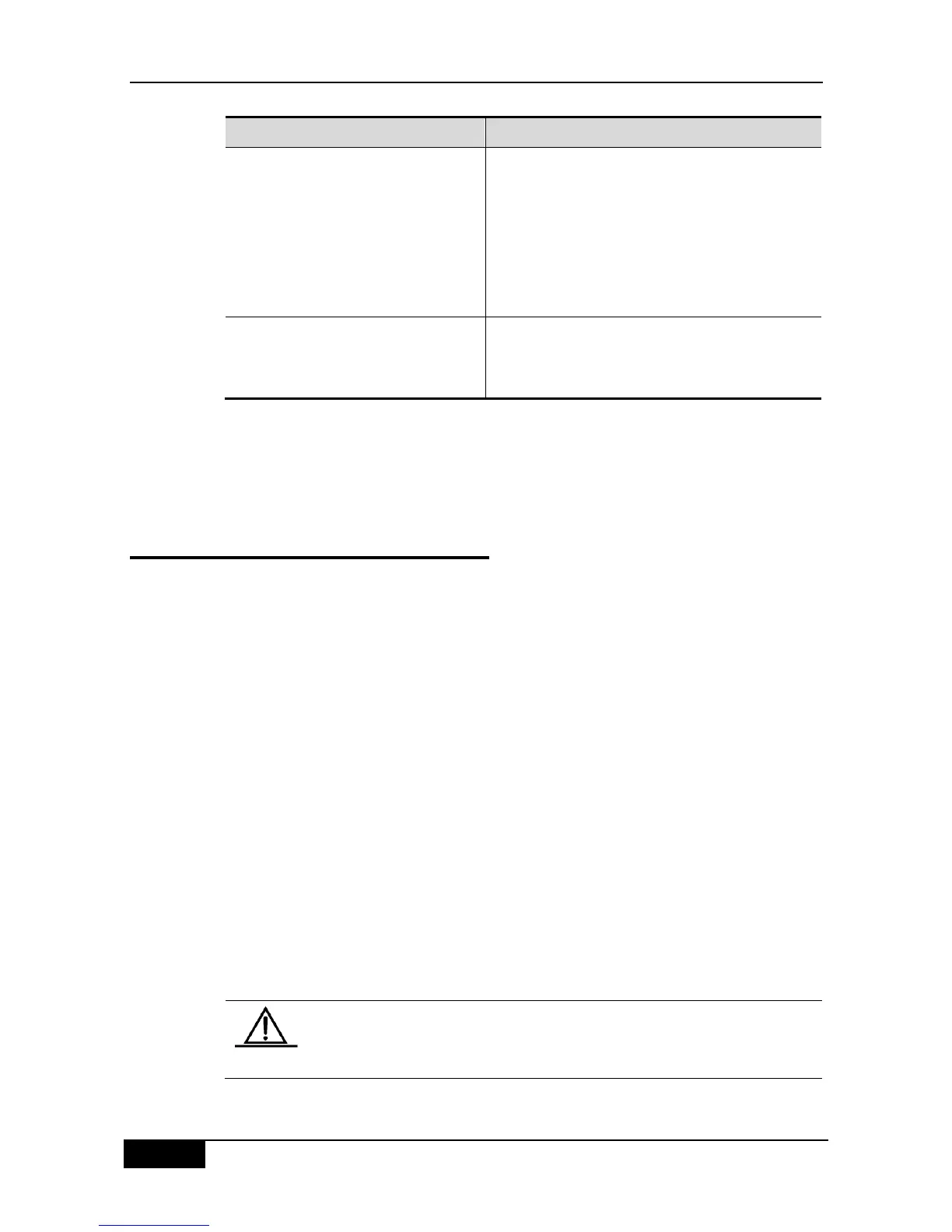(Optional) Restart the BGP session and reserve the
unchanged route information sent by the BGP peer
(group).
Execution of this command will consume more
memory. If both parties support the route refreshing
performance, it is not necessary to execute this
command.
You can judge whether the BGP peer supports the route refreshing performance by the
show ip bgp neighbors command. If it is supported, you need to execute the neighbor
soft-reconfiguration inbound command when the input route policy changes.
29.6 Configuring Synchronization
between BGP and IGP
For it will pass through this AS and reach another AS, the route information will be advertised
to another AS only when it can ensure that all routers within this AS learn about this route
information. Otherwise, if some routers (operate the IGP protocol) within this AS don‘t learn
about this route information, the data message may be discarded for these routers don‘t
know this routing when the data message passes through this AS, namely, it will cause the
route black hole.
The ensuring of all routers within this AS learn about the route information out of this AS is
referred to as the synchronization of BGP and IGP. The simple implement method of the
synchronization is that the BGP Speakers redistribute all of the routes learned out by the
BGP protocol to the IGP, to ensure the routers within the AS learn about such route
information.
The synchronization mechanism of BGP can be cancelled under two conditions:
1. There is no the route information which pass through this AS (In general, this AS is an
end AS).
2. All routers within this AS operate the BGP protocol and the full connection relationship
is established among all BGP Speakers (The adjacent relationship is established
between any two BGP Speakers).
By default, the synchronization is enabled. However, to ensure the quick
convergence of the route information, it is recommended to cancel the
synchronization mechanism if possible.

